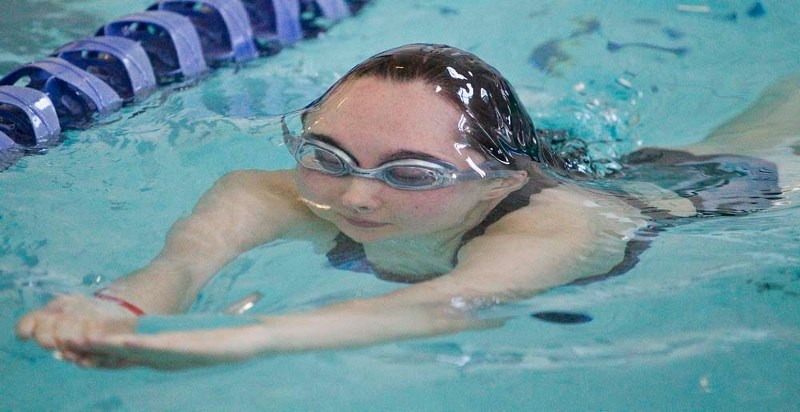Gazette reporter Amy Crofts is trying a different workout each month in an attempt to inspire people to spice up their fitness routine. If you have a workout idea, email: [email protected]
Sprinting, jumping, cross country skiing and some basic karate kicking – I did all of that and more before work on Tuesday morning.
My heart was pumping within minutes of starting a Karataquatics class at Grand Trunk Fitness and Leisure Centre in Edmonton.
St. Albert aquatic fitness instructor Yvonne Dichristafaro put the 20 or so participants to work with intervals of jogging, jump squats and arm circles to warm up.
"Stronger! Faster! Tighter! Taller! Go-go-go!" she yelled, while splashing in the pool with attendees.
There was no music to be heard, just sparse chatter and the thrashing of water. Everyone was focused on the 12 exercises at hand.
Edmontonian Tony Kaiser devised the concept for Karataquatics. The workout blends basic karate techniques with aqua aerobics.
"The idea behind it is martial arts with the counting, rhythm and strokes. I show people how to use the water most effectively with power, force and exertion … you learn how to build strength," said Dichristafaro, who also teaches at Fountain Park Recreation Centre.
Water provides added resistance so the body is always working opposing muscle groups, she explained.
Several Karataquatics participants said they attend a class at least once a week as a way to manage their chronic pain from arthritis and fibromyalgia.
Jessica van Soest, a physiotherapist at Leading Edge Physiotherapy, recommends water workouts for many of her clients who are rehabilitating an injury.
She said most patients who use hydrotherapy have had hip or knee replacements.
"These people are coming out of rehab (and) they can't be fully weight bearing on their joint because it hurts. The water creates buoyancy that helps to alleviate a lot of the pressure on the joint, but at the same time working the muscles."
Hydrotherapy provides an alternative for people "who would otherwise not be able to get up and walk around during the day," added van Soest.
Aqua community
Many of Dichristafaro's students have been coming to her classes for years. In addition to Karataquatics, she instructs Aquasize, Aquabox (water boxing) and Aqua Zumba.
Most of the participants are seniors, but they can range from as young as 10 years old to 75, she said. Some come to socialize, others take a class as the "icing on the cake" to their regular gym workout.
"Whether you're walking with chronic knee or hip problems or you just want to get off the couch, the water is the best place to start any program," she said.
One hour of Karataquatics threw my previous notions of water aerobics out the window – this was a full-body workout, not just flailing in the water.
It's also an exercise you can enjoy at your own pace – add more resistance by moving more quickly through the water, or use it to complement laps in the pool. You can also easily slip out of class without disturbing anyone if you're tired out.
"I always tell people, just get to the water and I'll do the rest," said Dichristafaro. "Water is the liquid gym … and you don't even have to get your hair wet."




